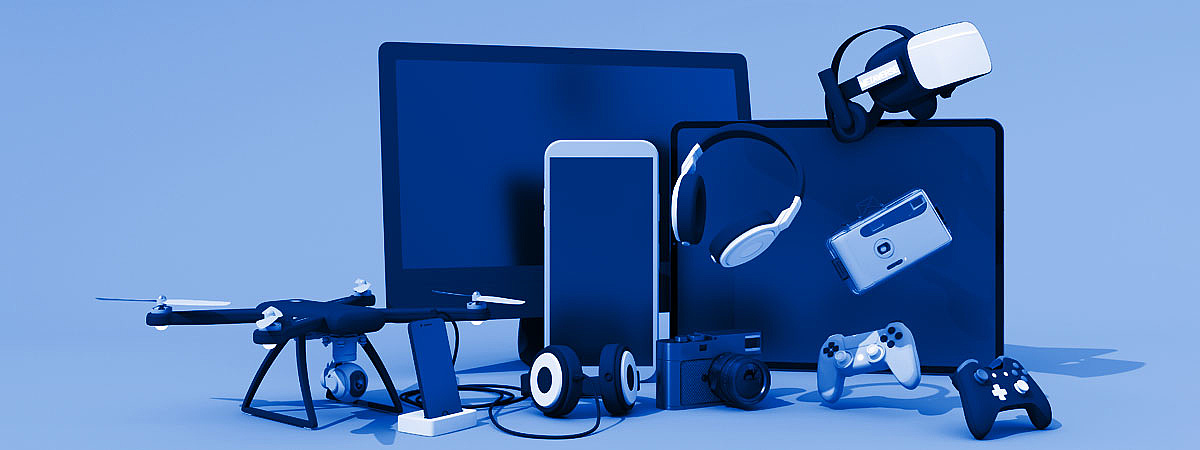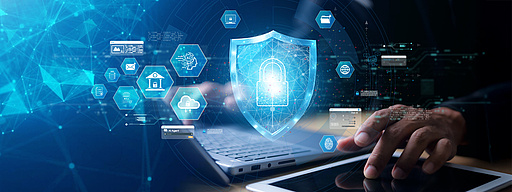
From Zero Trust to UEM – 5 key MDM trends
Today, we all work with mobile devices of various kinds. For companies, it is important to manage them securely and efficiently. Mobile Device Management supports IT teams in addressing this challenge.
In short
- The number and variety of mobile devices in corporate use is constantly increasing along with associated cybersecurity threats.
- Security, access control and data protection guidelines must also be enforced consistently for mobile and all other endpoint types.
- OS updates and software patch management necessarily include mobile devices.
- Mobile Device Management provides appropriate solutions for implementing these requirements securely and efficiently.
In its May 2023 report, Guidelines for Managing the Security of Mobile
Devices in the Enterprise, the U.S. National Institute of Standards and Technology (NIST) noted that while mobile devices initially were used mainly for personal communications, “they
are now permanent fixtures in enterprises and are used to access modern networks and systems to process sensitive data.”
The numbers and types of mobile devices in use today now include much more than smartphones or laptops. Think, for example, of autonomous drones that take over inventory recording in huge
warehouses, portable scanners and much more. A host of new applications for remote and mobile work and for Internet of Things (IoT) and Industrial Internet of Things (IIoT) uses are
accelerating this trend.
In enterprise IT, enterprise mobility management (EMM) refers to the holistic management of mobile devices. EMM includes hardware-focused mobile device management (MDM)
while Mobile Application Management (MAM) and Mobile Content Management (MCM) apply to apps, data and operating systems. MDM in particular is becoming increasingly important for managing
vulnerabilities while maintaining end user productivity and satisfaction. It’s also shaping five important trends for EMM overall.
Zero Trust Security
“Zero trust” is a term coined by cybersecurity expert John Kindervag in 2010. Zero trust assumes that every user, device and connection represents a potential threat to
broader endpoint and network security. That enables companies to identify and respond to security threats more quickly. It’s a key element of MDM as organizations deploy
and manage more mobile devices that access sensitive data and applications.
Zero trust security requires strong authentication and access control to ensure that only authorized individuals, devices and applications can access the corporate network.
It also assumes that access rights are limited to the minimum necessary for effective operation.
IoT and IIoT
MDM also is important for managing a rapidly expanding array of IoT and IIoT devices used in business and manufacturing environments.
IoT devices are generally managed like traditional IT endpoints and include watches, fitness trackers and other wearables, and hardware and software used for controlling lighting, HVAC,
physical security and other systems.
IIoT or Operational Technology (OT) devices used in manufacturing, logistics, inventory and related fields include specialized systems as well as repurposed or modified IT endpoints. They
include programmable logic controllers (PLCs), industrial control systems (ICSs), and a wide variety of sensors and hand-held devices to monitor and optimize operations. OT devices often
require different and more complicated management processes than IT endpoints in order to maximize availability and minimize operational interruptions.
As the number of IoT and IIoT devices increases, IT and OT admins need to implement consistent and comprehensive management and security policies and procedures appropriate
for each type of device. That includes properly configuring and updating them to provide the highest possible levels of cyber-resilience, reliability and efficiency.
Bring Your Own Device (BYOD)
Many companies use a Bring Your Own Device (BYOD) approach allowing employees to use their own mobile or home office devices for company purposes. These include
smartphones, tablets, laptops and other devices.
BYOD can help increase employee productivity and satisfaction. But it also adds security risks if users are not diligent about applying updates, patches, hot fixes or new
versions of apps and OSes. Dangerous security vulnerabilities can arise.
Companies must manage BYOD devices in accordance with corporate IT guidelines while maintaining IT security and end user privacy by cleanly separating business and user apps and data. This
means configuring devices with appropriate policies and technologies, e.g., containerization, to enable centralized, comprehensive and secure management.
Mobile Application Management
Mobile Application Management (MAM) encompasses technologies and policies for managing and securing mobile apps. MAM and related MCM practices control access to corporate data within applications, monitor application usage, and enforce security policies. MAM is especially important for enterprises that use in-house or third-party applications for accessing sensitive data and content.
Unified Endpoint Management
Whether MDM, MAM or MCM – Unified Endpoint Management (UEM) logically acts as an umbrella for all aspects of Enterprise Mobility Management, as every laptop, smartphone or mobile sensor is a network endpoint. In turn, mobile device management is increasingly influenced by trends in UEM such as:
- Cloud-based monitoring
- Convergence of UEM and security solutions
- IT automation
Those and other factors make the MDM modules of the baramundi Management Suite essential components for ensuring the security and reliability of all types of devices on company networks.
Mobile meets Security
Mobile device management provides companies with the tools needed to counter continuously growing cybersecurity threats. Combined with powerful and intuitive automation, MDM also improves overall IT efficiency, consistency and performance while supporting end user productivity and satisfaction. You can learn more about how to take advantage of baramundi MDM solutions on your network.


